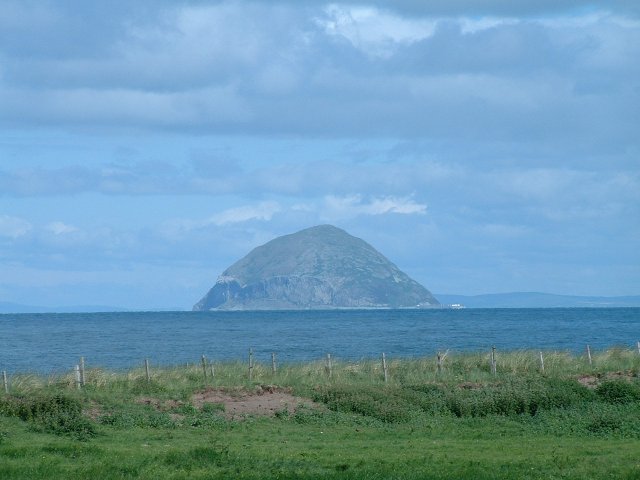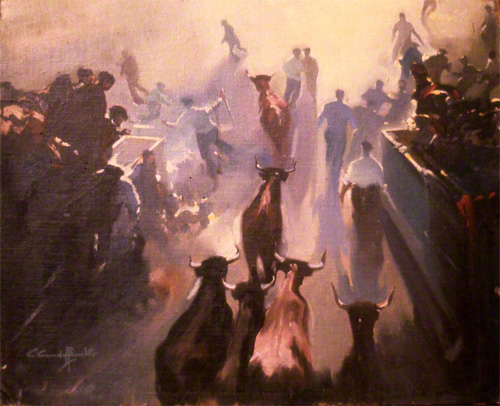|
Turnberry Railway Station
Turnberry railway station was a railway station serving the Turnberry Golf Course and its associated hotel, South Ayrshire, Scotland. The station was part of the Maidens and Dunure Light Railway. History The station opened on 17 May 1906, and closed on 2 March 1942. The platform roof was sold to Dumbarton F.C. in 1957 and used as a terrace cover at the football club's former ground at Boghead Park Boghead Park was a football ground in the town of Dumbarton, Scotland. It was owned by Dumbarton F.C., who played there for 121 years between 1879 and 2000. By the time the ground closed in 2000, it was the oldest stadium in Scotland that had b .... Its significance as a railway station can still be linked to the Turnberry Hotel and club house which displays an original railway poster by Claude Buckle showing the Turnberry Hotel in 1932. References Notes Sources * * * * Article in British Railway Journal No 8 Summer 1985 Wild Swan Publications Disused railway stati ... [...More Info...] [...Related Items...] OR: [Wikipedia] [Google] [Baidu] |
Turnberry (golf Course)
Turnberry is a golf resort on the Firth of Clyde in Ayrshire, southwest Scotland. It comprises three links golf courses, a golf academy, a five-star James Miller-designed hotel from 1906, along with lodge and cottage accommodations. Turnberry was a popular golf course and resort from its inception, made accessible because of the Maidens and Dunure Light Railway. It closed in both World Wars for military use, and there was concern it would not open following World War II, but it was redesigned by Mackenzie Ross and re-opened in 1951. The course was the scene of the 1977 Open Championship, where Tom Watson scored a close victory over Jack Nicklaus. The property has been owned by the Trump Organization since 2014, who now brand the course Trump Turnberry. Location The resort is south of Glasgow, on the A719 just north of the A77, a major road from Glasgow to Stranraer via Ayr. It is sited on headland along the Firth of Clyde, overlooking the Isle of Arran and Ailsa Craig. H ... [...More Info...] [...Related Items...] OR: [Wikipedia] [Google] [Baidu] |
Boghead Park
Boghead Park was a football ground in the town of Dumbarton, Scotland. It was owned by Dumbarton F.C., who played there for 121 years between 1879 and 2000. By the time the ground closed in 2000, it was the oldest stadium in Scotland that had been in continuous use. History Dumbarton first used Boghead Park in 1879. The club shared the first Scottish league championship in 1891 with Rangers, then became the first outright champions in 1892. The pitch was turned 90 degrees in 1913. After this the club constructed a tiny main stand, nicknamed the " Postage Box", which only had a capacity of 80 seats. It was replaced by a modern facility that held 303 people in 1980. The new stand was opened by Alan Hardaker, former secretary of the English Football League. Next to this stand was a small cover used by bookmakers when Boghead staged greyhound racing. Floodlights were installed in 1957 and the ground's record attendance was set in the same year, 18,001 for a Scottish Cup match ag ... [...More Info...] [...Related Items...] OR: [Wikipedia] [Google] [Baidu] |
Railway Stations In Great Britain Opened In 1906
Rail transport (also known as train transport) is a means of transport that transfers passengers and goods on wheeled vehicles running on rails, which are incorporated in tracks. In contrast to road transport, where the vehicles run on a prepared flat surface, rail vehicles (rolling stock) are directionally guided by the tracks on which they run. Tracks usually consist of steel rails, installed on sleepers (ties) set in ballast, on which the rolling stock, usually fitted with metal wheels, moves. Other variations are also possible, such as "slab track", in which the rails are fastened to a concrete foundation resting on a prepared subsurface. Rolling stock in a rail transport system generally encounters lower frictional resistance than rubber-tyred road vehicles, so passenger and freight cars (carriages and wagons) can be coupled into longer trains. The operation is carried out by a railway company, providing transport between train stations or freight customer faciliti ... [...More Info...] [...Related Items...] OR: [Wikipedia] [Google] [Baidu] |
Railway Stations In Great Britain Closed In 1942
Rail transport (also known as train transport) is a means of transport that transfers passengers and goods on wheeled vehicles running on rails, which are incorporated in tracks. In contrast to road transport, where the vehicles run on a prepared flat surface, rail vehicles (rolling stock) are directionally guided by the tracks on which they run. Tracks usually consist of steel rails, installed on sleepers (ties) set in ballast, on which the rolling stock, usually fitted with metal wheels, moves. Other variations are also possible, such as "slab track", in which the rails are fastened to a concrete foundation resting on a prepared subsurface. Rolling stock in a rail transport system generally encounters lower frictional resistance than rubber-tyred road vehicles, so passenger and freight cars (carriages and wagons) can be coupled into longer trains. The operation is carried out by a railway company, providing transport between train stations or freight customer faciliti ... [...More Info...] [...Related Items...] OR: [Wikipedia] [Google] [Baidu] |
Maidens Railway Station
Maidens railway station was a railway station serving the village of Maidens, South Ayrshire, Scotland. The station was part of the Maidens and Dunure Light Railway. History The station opened on 17 May 1906.Butt, page 152 It closed on 1 December 1930, but reopened briefly between 4 July 1932 and 1 June 1933. The station had a single island platform An island platform (also center platform, centre platform) is a station layout arrangement where a single platform is positioned between two tracks within a railway station, tram stop or transitway interchange. Island platforms are popular on ... with a small wooden building with overhanging canopies.Wham, page 12 The former station site is located next to the A719, a short distance east of the village of the same name, however the site is now a caravan park leaving no remaining trace of the station. References Notes Sources * * * * Article in British Railway Journal No 8 Summer 1985 Wild Swan Publications Dis ... [...More Info...] [...Related Items...] OR: [Wikipedia] [Google] [Baidu] |
Girvan Railway Station
, symbol_location = gb , symbol = rail , image = Girvan station exterior.JPG , caption = The exterior of Girvan station , borough = Girvan, South Ayrshire , country = Scotland , coordinates = , grid_name = Grid reference , grid_position = , owned = Network Rail , manager = ScotRail , platforms = 2 , code = GIR , transit_authority = SPT , years = 5 October 1877 , events = Opened as Girvan New , years5 = 1 April 1893 , events5 = Renamed as Girvan , mpassengers = , footnotes = Passenger statistics from the Office of Rail and Road , embedded = Girvan railway station is a railway station serving the town of Girvan, South Ayrshire, Scotland. The station is managed by ScotRail, who operate all passenger services from there. It is on the Ayr to Stranr ... [...More Info...] [...Related Items...] OR: [Wikipedia] [Google] [Baidu] |
Claude Buckle
Claude Henry Buckle Royal Institute of Painters in Water Colours, R.I., Royal Society for Marine Artists (R.S.M.A.) (10 October 1905 – 9 August 1973) was an England, English painter well known for Poster, railway posters, carriage prints and for Oil painting, oil and Watercolor painting, watercolour paintings. Early life Claude Buckle was interested in art from an early age. He attended Grammar school in Wolverhampton and on leaving in 1922 joined J. S. Fry & Sons Chocolates in Bristol as an assistant architect. During his time with Fry’s he was involved in the building of the new factory at Keynsham Somerdale Factory, Somerdale and was supported by Fry’s to study Architecture at University of Bristol, Bristol University. He lived at Keynsham and Kent Road Bishopston in Bristol. Early career In 1926, at the age of 21, Buckle moved to London where he joined Wallis, Gilbert and Partners responsible for building the Ford factories at Dagenham. Buckle painted in his spar ... [...More Info...] [...Related Items...] OR: [Wikipedia] [Google] [Baidu] |


